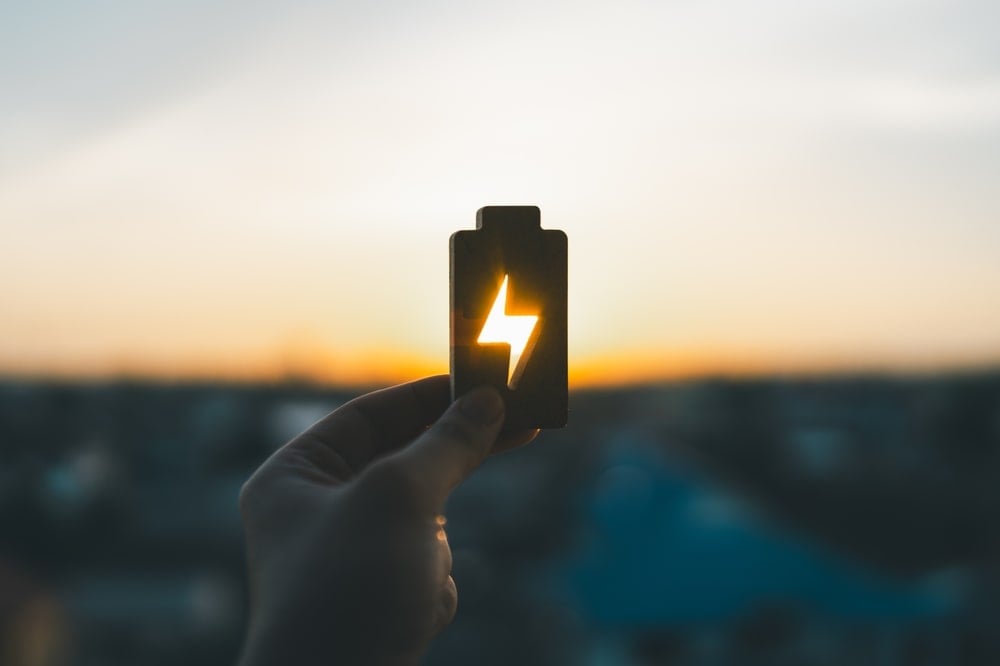
It’s easy to understand the appeal of solar power. Unlike fossil fuels, it is available anywhere in the world in enormous quantities and is completely free to use.
However, it is only available during the daytime.
Battery storage systems for solar EV charging ensure that none of the electricity generated by your solar panels during daylight hours is lost or wasted. Instead, it is stored on-site for use as and when you want it, helping to reduce utility bills by a further 30% and providing you and your electric car’s recharging needs with even greater convenience.
Solar panel battery systems can cost anywhere from under $4,000USD to $20,000+, not including installation. These prices may be prohibitive depending on your budget, but with long-term budget planning, you should see a return on your investment well before the battery system needs to be replaced. Battery storage for solar EV charging panels typically has warranties of around 10 years.
Table of contents

The potential of solar-powered charging
Solar EV charging utilizes the free and infinite power of sunlight to recharge your electric vehicles on a daily basis, wherever you are in the world. As technology in the e-mobility industry continues to improve – dropping prices and increasing efficiency – outfitting your home with a solar EV charging system can make owning an EV more convenient, less expensive, and more environmentally friendly.
To maximize the potential of any homegrown EV solar setup, installing a battery storage system is highly recommended. Battery storage for solar charging helps neutralize the limits of EV solar charging by providing ready access to renewable electricity whenever you need it, rather than only during sunlight hours. Moreover, storing surplus solar electricity in household batteries can further reduce utility bills through peak shaving and load shifting.
Whether you already charge your EV with homegrown solar power or are hoping to in the future, this guide to battery storage for EV solar charging aims to illuminate the ways batteries and solar panels work together, as well as detail the various pros and cons of solar battery storage, so that you can make an informed decision on your future investment.

How does solar battery storage work?
If you’re wondering how battery storage works with solar, it’s worth first noting that storage batteries aren’t an absolute necessity for solar EV charging. Solar panels installed on your roof or elsewhere on your property convert the energy found in sunlight into consumable AC electricity. Solar panel owners can then use this electricity to power both home appliances and recharge their electric vehicles, provided they do so during daylight hours, when their panels are exposed to sunlight.

Battery storage comes into play when it becomes preferable for you to have 24/7 access to the energy your solar panels generate and to store your generated solar electricity when you’re not using it. Battery-linked solar EV charging setups are known as “solar-plus-storage” systems.
After all, most EV owners tend to recharge their cars at home, when they get back from work or overnight. Yet, because the majority of solar electricity is generated around the hours of midday, there is a mismatch between driver charging preferences and energy availability.

Solar-plus-storage systems store all or some of the electricity generated by solar panels in long-lasting batteries so that this electricity can be used to recharge EVs and power household appliances at any time, day or night.
In solar EV charging systems where batteries are not used, any solar electricity not consumed during the day is fed back into the grid, and thus cannot be reclaimed later in the day for EV recharging purposes.
Considering most EV drivers are employed in full-time positions, we may imagine that your home tends to use the least electricity during typical working hours (9-5) when your solar panels are producing the most. As such, adding batteries to your solar panels enables you to get the most out of their solar array, without wasting any surplus energy produced.
Do solar panels have batteries?
Solar panels do not come with battery storage units attached. The solar panels you install on your roof will, if not linked to a separately purchased battery system, be wired directly into your home electrical circuit. During daylight hours, the energy produced by your panels can be used to recharge your EV or power household appliances, but without a battery system any energy not used (because, for example, of lower energy consumption during the day) will be sent back to the grid.
Exploring different types of battery storage solutions for EV solar charging
There are myriad different types, brands, and models of batteries available for use alongside your household solar panel array. The battery you choose will depend a great deal on your projected recharging needs, household energy consumption, budgetary constraints, and available space.

A few industry terms worth explaining here include:
- Depth of Discharge (DoD)
- AC-coupled and DC-coupled battery storage systems
- Lead acid and lithium-ion
Depth of discharge
Depth of Discharge refers to the maximum amount of energy you should use from your battery at any one time in order to keep it in a healthy working condition.
You can think about DoD by thinking of your smartphone. Rather than letting your phone run all the way down to 0% battery before recharging, it’s better both for you and your phone battery’s lifespan to recharge it once it reaches around 20%. In the context of a solar battery, this would be described as the phone having a DoD of 80%.
Different battery storage systems for solar EV charging have different DoDs, though 80-90% is common. Some, like flow batteries, have 100% Depth of Discharges, which is handy for the EV owner, but does come with its own unique drawbacks, such as the units occupying more physical space than other batteries.
AC or DC?
Solar panels produce electricity as a direct current (DC), which is inverted to alternating current (AC) for compatibility with household appliances, including your home EV charger. Batteries, however, tend to store electricity as DC. As such, there are two different types of solar storage solutions available: AC-coupled and DC-coupled. You can read more about the differences between AC and DC electricity here.
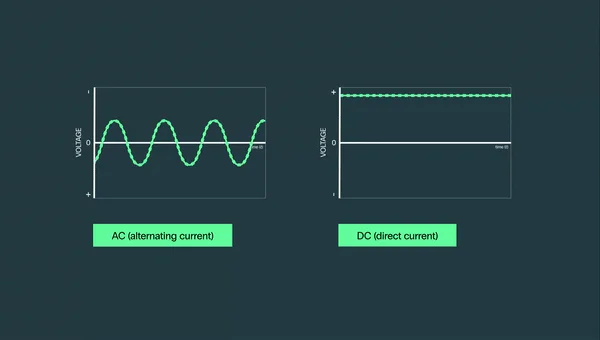
AC-coupled solar batteries are the most common type and are necessary if retrofitting batteries to a pre-existing solar array (but more on that later). The one drawback to AC-coupled batteries is that some of the electricity generated by your PV array is lost during conversion prior to battery storage.
DC-coupled batteries can only be installed in tandem with a new solar panel installation and can be directly linked to solar panels with no need for an intermediary inverter. This way, DC electricity generated by your panels is fed directly, with minimal energy loss, to your battery storage units.
Note, however, that any stored solar electricity used to recharge your EV would still require inversion before being fed to your home charging station since these currently use AC.
Lead acid vs. lithium-ion batteries
Another consideration to make when shopping for solar panel batteries is their chemical composition. Mostly, you will have a choice between ‘lead acid’ batteries, and ‘lithium-ion’ batteries. The principal differences between the two are lifespan and cost.

Lifespan
Lead acid batteries have shorter lifespans compared to their lithium-ion cousins: around 2-3 years. In contrast, lithium-ion batteries typically last for 10 years or more.
Cost
What you gain in longevity with lithium-ion solar EV charging batteries, you pay in price. Lithium-ion is more expensive than the lead acid alternative, leaving you to weigh the pros of a longer lifespan against your budget.
How much does a solar battery storage system cost?
Speaking of budget, let’s now take a look at the kind of money you can expect to spend on quality battery storage for solar EV charging.

At the low end, you can expect to spend anywhere from under $4,000 USD to around $9,000 USD, depending on size and battery type, before installation. This can equate to around $500-$1,100 per kWh of battery capacity. At the high end, however, you could be looking at an initial investment of up to $20,000 USD per battery unit.
The costs of solar EV charging battery installation can vary depending on the contractors you use, whether the battery system is being retrofitted, or whether it is being installed alongside a solar panel array. To give a ballpark figure, you could consider budgeting an additional 10% to 15% of your battery’s unit price to pay for installation.
Long-term savings
With the right battery storage installation for your home solar EV charging setup, you use 100% of the electricity your solar panels generate. As such, you may expect to offset the cost of your utility bills by however much electricity (measured in kWh) your panels produce.
Granted, it is a bit of a simplified formula, as it depends on how much electricity you store vs consume while generating solar power, but it will give you a ball-park idea.
So, to calculate your potential long-term savings, you’d first need to know your average annual energy consumption and the annual cost of your electricity bill, as well as your panels’ projected average annual energy production. You can use these figures to determine how much your utility bills may be reduced by with the addition of battery storage for your solar panels.
The thing is, solar can only be generated while the sun is out. Often exactly the time when we are out and about. However, it becomes interesting when you are able to store that energy and use it while the sun is down.
For example, let’s say your home uses 2,700kWh of electricity a year, costing you $918 USD (or $0.34 per kWh) via the grid. Then let’s say that your solar panel array generates 2,000 kWh of electricity yearly, over half of your annual usage. If you are able to use all of that energy by being able to store it when you're not at home. Your savings would amount to about $ 680 per year (2,000 x 0.34).

Return on investment (ROI)
With the above figure in hand, you can work out the expected ROI for your battery storage purchase. Simply divide the overall cost of the battery units and installation by the savings on utilities earned through your solar array.
A $4,000 solar battery system, for example, would show a return on investment after just six years, given the example savings calculated above ($4000 spent / $680 saved annually = 5.88 years).
Given the average lithium-ion solar storage battery comes with a warranty of 10 years or longer, the situation discussed above would start not only saving you money but effectively making you money well before it required replacing.
Available incentives and rebates can offset costs
Countries around the world are pushing for a move toward the type of environmental sustainability that e-mobility affords. As such, in an effort to promote greater EV adoption and residential renewable energy, there may be a range of tariffs, rebates, or other incentives available in your country to help you finance both your solar panels and solar panel batteries.
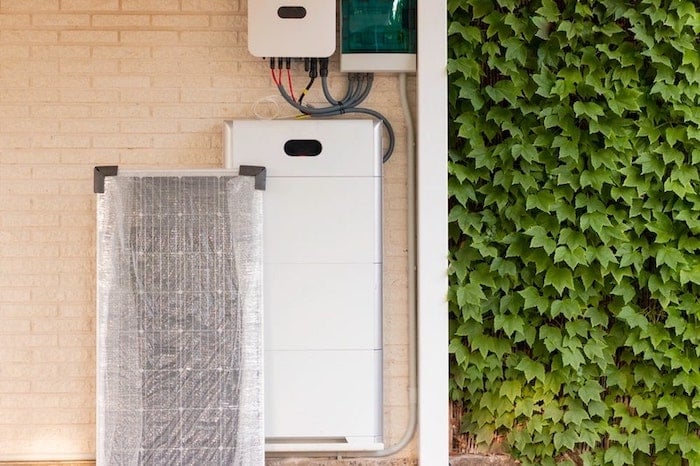
For example, the UK government offers a tax incentive of 0% VAT on new solar batteries installed before 2027, provided they are installed alongside new solar arrays.
How much solar battery storage do I need?
Determining how much solar battery storage, or how many batteries, you need to store the electricity generated by your panels depends on a number of factors unique to your location and solar EV charging setup. Make sure you have the following information to hand before shopping for a solar battery storage solution:
- The average kWh of electricity generated by your solar panels daily.
- The average kWh of electricity consumed by your home (including for EV charging) on a daily basis
- You can acquire an even more useful idea of energy consumption by breaking this figure down according to the energy consumed during daylight hours (i.e. directly from your solar panels) versus after daylight hours (i.e. from your solar battery)
Which of the following functions do you want your battery storage system for solar EV charging to fulfill:
- Powering your home and EV’s essential daily needs
- Powering only your EV’s essential daily recharging needs
- Powering your home and EV’s daily needs and acting as a backup generator, or generator for off-grid living
- Powering only your EV’s daily needs and acting as a backup solar EV charging generator, or generator for off-grid EV charging
Note that depending on the role(s) you wish your solar batteries to fulfill, you will want to compliment the battery with a solar panel array capable of generating enough electricity to meet those needs.
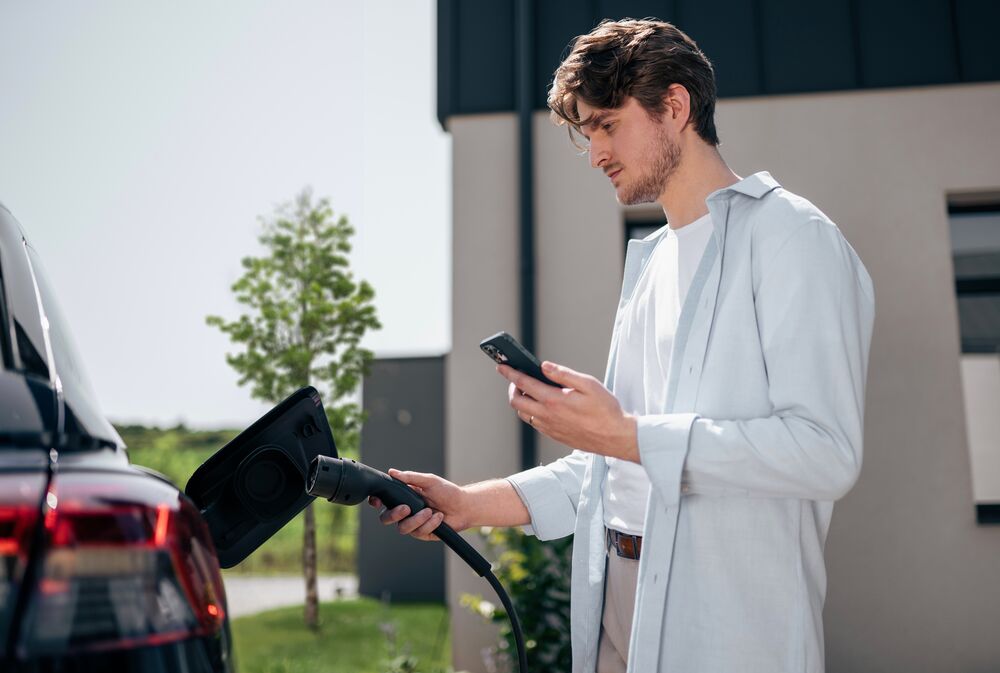
Benefits of battery storage for solar EV charging
Having discussed the ways in which battery storage works with solar panels, we’ll close our article with a quick insight into the key pros and cons of investing in battery storage for solar EV charging.
1) Storing solar energy lets you use it when(ever) you need it
Solar batteries expand the potential of household solar, allowing you access to clean, renewable energy at any time. In other words, battery storage for solar EV charging removes the limitations of solar panels, enabling you to recharge your EV overnight or whenever else you need to, using 100% free electricity.
2) Readily available energy backup
Batteries store as much solar electricity as they have the capacity for, meaning that depending on the size of your system, you may be able to store several days' worth of electricity at a time.
Having an energy backup system like this in place means you won’t have to change your EV charging behavior during times of low solar generation (such as during storms or on cloudy days). Moreover, using your solar batteries as a backup generator effectively keeps you, your house, and your electric car covered during power outages.
3) Enjoy the reliability of uninterrupted charging
By charging your EV with solar electricity stored in a battery, your household EV charger receives a steady, consistent flow of electricity, enabling a reliable and uninterrupted charging process.

When charging your EV with electricity fed directly from your solar panels, you may instead notice peaks and dips in charging speeds and power depending on the time of day or strength of the sun. This makes it more difficult to judge exactly how long your EV will take to recharge and is therefore a less convenient charging solution.
4) Peak load management and load shifting
Battery storage for home solar EV charging provides greater control over your household energy usage. In other words, it enables more efficient energy management. Two ways in which solar battery units can improve your energy management efficiency are “peak shaving” and “load shifting.”
Peak shaving is the process of avoiding triggering peaks in your grid-linked electricity usage by supplementing household energy consumption with renewable energy from your solar batteries.
Load shifting is what we call storing electricity in batteries to be used on “loads” (i.e., highly consumptive things like recharging your EV or running your clothes dryer) at times in the day when electricity is cheaper, and/or it is more convenient for you to use it.
Both of these energy management methods, enabled by solar battery storage, may save you extra money on your utility bills whilst reducing pressure on the grid. One UK-based estimate suggests solar-plus-storage systems save their owners 30% more on utilities than solar-only systems.
Cut your carbon footprint
Reducing our negative environmental impact is of high importance and a primary reason for EV adoption cited by many of the drivers we talk to. Adding a battery storage unit to your solar EV charging system can help to further reduce your carbon footprint by 7-15%.

Potential drawbacks of battery storage for solar EV charging
There are far fewer cons to battery storage than there are pros, but in the interests of transparency and accuracy, we feel it’s always worth mentioning the drawbacks that do occur.
1) A costly initial investment, prolonging ROI
As previously discussed, the initial investment required to install battery storage units for solar EV charging can be prohibitively high. If you’re concerned about the costs associated with solar batteries, be sure to investigate local public and private schemes and incentives that may help you finance or reduce the initial costs of your ideal setup.
2) Shorter lifespans compared to solar panels
The average quality solar panel should last around 25 years before a drop in performance becomes noticeable or replacement is required. In contrast, even the most advanced solar battery units, such as the Tesla Powerwall, come with warranties of around just 10 years. This means that over the average lifespan of your solar panel array, you may need to replace your battery setup twice or even more.
3) Like solar panels, solar batteries for EV charging also lose efficiency over time
As you’ll have noticed with the battery in your smartphone, it becomes less efficient over time, storing less energy than it once did and requiring a more frequent recharge. The same goes for solar batteries and battery storage systems for solar EV charging. Lithium-ion batteries tend to be 95-97% efficient when new. By the end of their warranty, however, this efficiency is liable to have dropped.
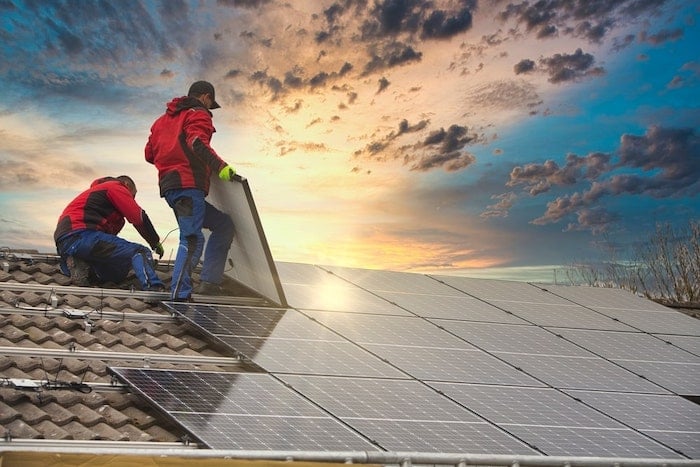
Conclusion
Incorporating battery storage into your solar EV charging setup at home ensures you are able to make the most of the free, renewable electricity your solar panels generate.
Batteries provide your home and electric car with a readily available source of green electricity regardless of the time of day, not only saving you money on your utility bills, but further lowering your carbon footprint, relieving pressure on the grid, and making the EV recharging process more reliable overall.
Though solar panel battery systems, known also as solar-plus-storage systems, can cost a lot to purchase and install, they should still provide you with a return on your investment long before they require replacing.
To learn more about charging your EV at home using the power of the sun, check out the solar EV charging articles on our EVBox blog.
Related articles

Smart Charging for Solar EV Systems: What is possible today?
There are a variety of smart solutions available, capable of optimizing your solar EV charging system in different...

Can solar EV charging save you money?
Charging your EV using household solar panels can indeed save you money on your utility bills. How much money solar EV...
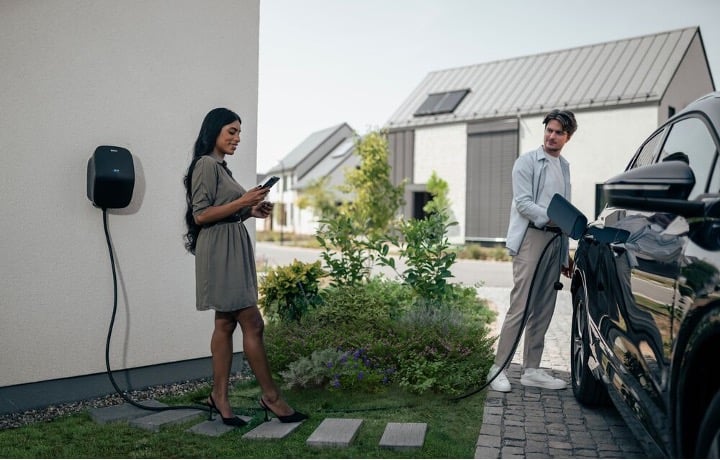
How to optimize your solar set-up for charging electric cars at home
There are several ways EV drivers can optimize a homegrown solar system to ensure their EV recharging needs are met....